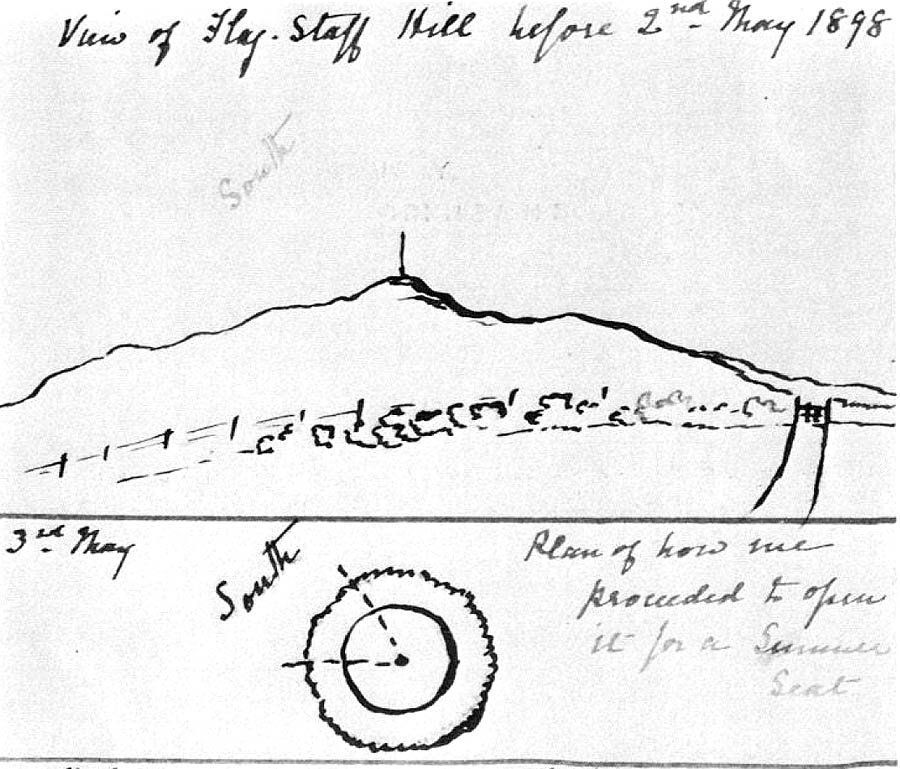 |
Lady Burroughs was
fascinated by the discovery of the chambered tomb or "Pict's House" as she calls
it and wrote an account of it,
complete with sketches, for her personal journal. "A few rough illustrations to
make clear this attempt to describe 'How we found a
Tumulus' - one of the most interesting events of my life."
Her excitement at the
find is very evident in her account, after the discovery of the lower chamber
she writes:-
" When I went to bed that night I could think of nothing else! There had we sat,
during many happy summers, stretched on the
purple heather, basking in the sunshine; laughing and talking with the
carelessness of youth, little dreaming that barely 8 feet below
us sat these grim and ghastly skeletons, of maybe 2000 years ago? 'In the
midst of life we are in death' I went to the Mound that
afternoon carrying a basket of spring flowers to plant at the Summer seat. On my
return journey my basket contained a Skull."
Lady Burroughs' dating was an underestimate, her party were probably the first
humans to see the interior of the lower chamber
and its contents in nearly 4000 years.
The work consists of nine
bound sheets of manuscript and two loose pages of sketches, it
was held at Trumland House until 1982
when it was donated to the Orkney Archive.
In 1985 Reynolds published most of it contents, the sketches
below come from this work:-
Reynolds D. M., Proceedings of the Society of Antiquaries of Scotland, 115, p115-124, 1985.
As usual, our sincere thanks to the Society for allowing use of material from its most excellent Proceedings.
 |
Here at the top we see
Flag-Staff Hill before work commenced, and below the section of the mound to be
dug out to house
"a summer seat". The mound is a vantage point with excellent views south over
Wyre and Eynhallow Sounds, but the searching
Orkney winds could often spoil the enjoyment of the vista, as Lady Burroughs
describes " a sharp north-easter is apt to catch one in the
ears as one looks at the view". She goes on to reveal the moment the idea of a
shelter came about :- " One lovely Sunday afternoon with
warm sunshine on front of us, and this same nor'easter annoying at one's
back we decided to put an end to the trouble and have a
"Summer seat" manufactured there".
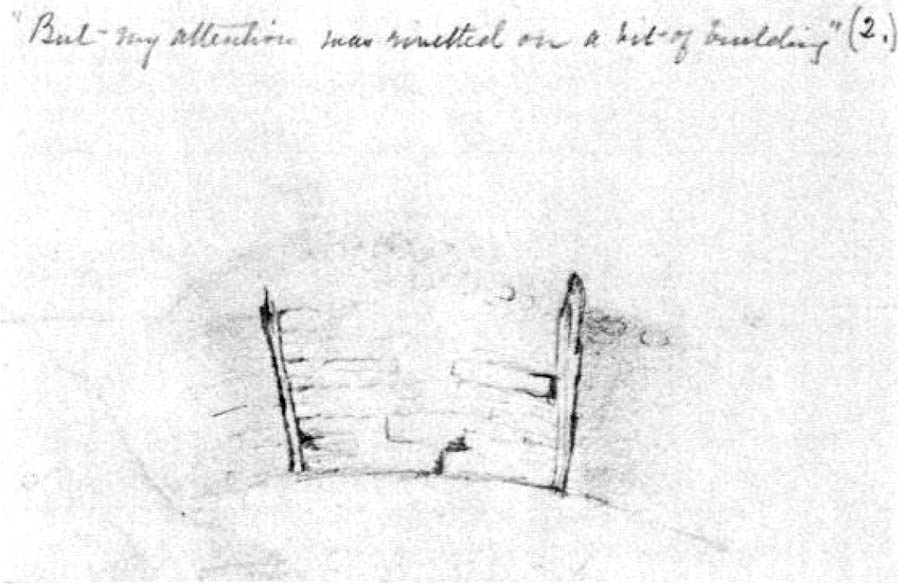 |
When work had progressed
into digging out a space for the summer-seat one of the workmen, Munro, drew the
Lady's attention to
"a wee bit holey" he had found in the mound. While examining this Lady Burroughs attention "was rivetted on a bit of building, rough
circular building".
She sketched this feature (above), note the two vertically set slabs framing a
section of dry stone walling, this is
the north wall
of the west cell of the upper chamber, the entrance passage would start just to
the right of this.
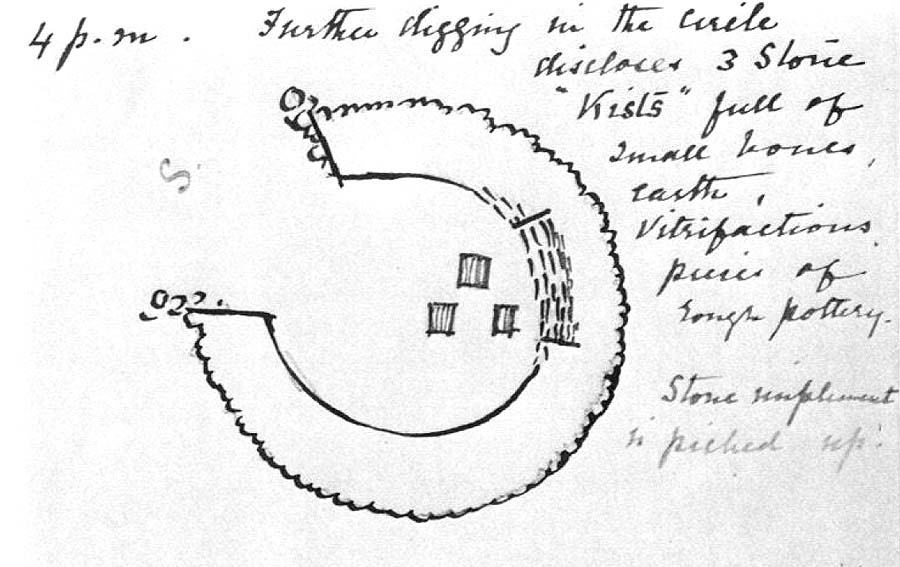 |
The Burroughs examined the
"wee holey" discovered by Munro, " 'That is a Cist, we both exclaimed!' Of
course we now proceeded to
investigate in earnest and within half an hour two more remains of ancient
"Cists" were found." The locations of the cists are shown
in Lady Burroughs' sketch above, the section of walling first spotted by her is
also shown.
By this time it was realised that the mound was indeed a "Pict's House" and the
summer seat installation became instead, an excavation.
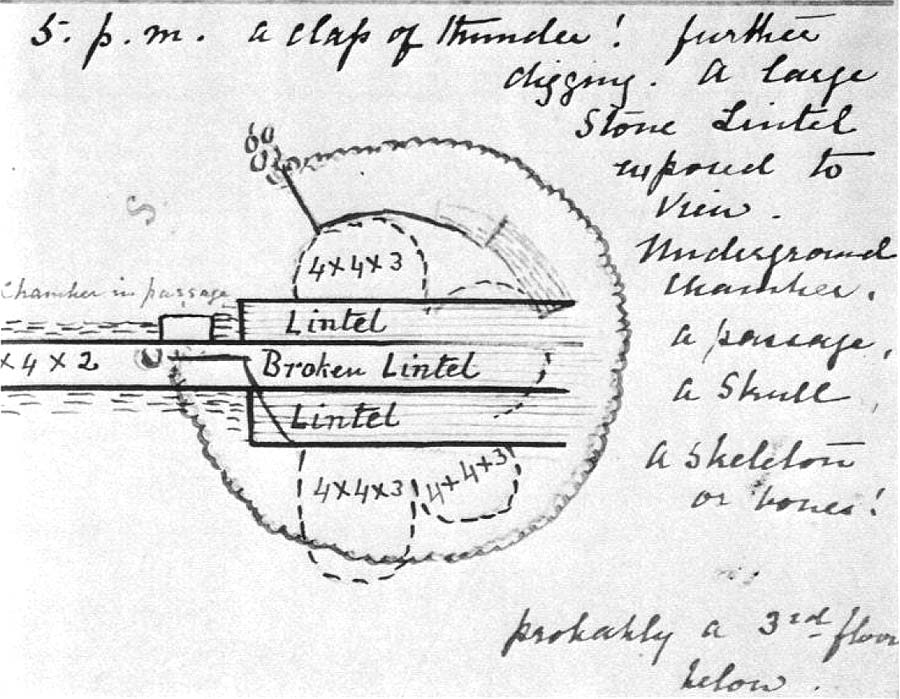 |
Clearing the floor of the
upper chamber revealed some of the lintels of the lower chamber, only three of
the five are shown in the sketch.
Through the hole in the broken central lintel "we got a glimpse of a dark
underground chamber". Lady Burroughs' excitement at the
discoveries unfolding is very evident in her writing, "Down in the darkness of
the chamber shone something white and erect".
"I ran down to the house for a candle. By its light one of the party descended
by the broken lintel and explored the underground chamber."
The white object was found to be " a skeleton in a doubled up sitting position".
Note the depiction labelled "Chamber in passage", this is the alcove near the inner end of the west passage wall that has now disappeared.
When the Burroughs got
their first glimpse into the lower chamber there was "A clap of thunder!", this
led to a fanciful story about the discovery
which spread around the island. " An Angel whispered to our Lady that she
was to open the mound; there was a clap of thunder; one workman was
picked up 50 yards from the spot, the other fainted, the Laird and the Lady
turned pale."
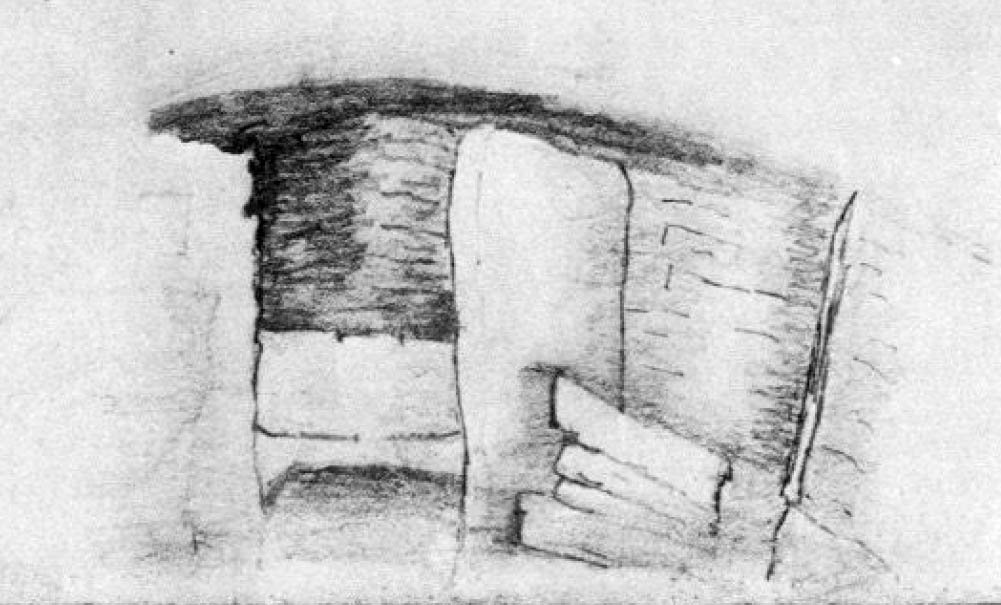 |
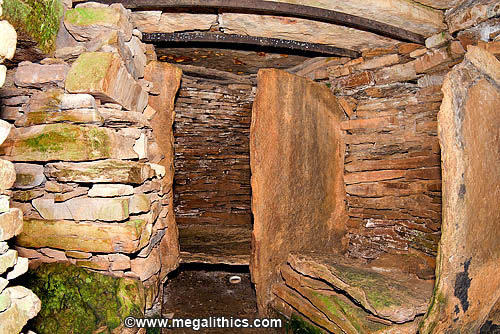 |
This is a sketch of the
western half of the lower chamber. The western end cell with its portal stones
is in on the left and the western "bench" cell is
to the right of this, the central dividing slab of the north wall is far right.
Lady Burroughs' sketch is very accurate, compare it to our photo of this view
below.
Note the multi layered "shelf" in the western bench cell (right), Grant's (4)
illustration shows this a single slab as in the other cells, Lady Burroughs'
sketch
however, agrees well with the arrangement we photographed there.
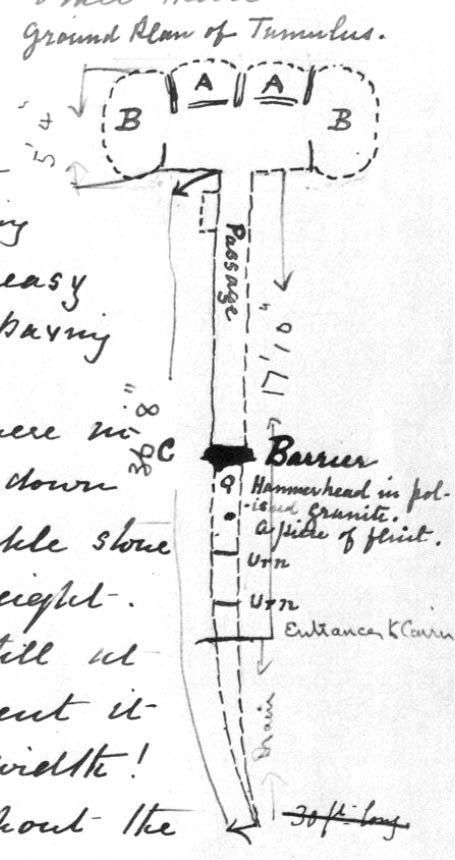
Lady Burroughs' plan of the
lower chamber, passage, and passage extension.
The plan compares well with modern surveyed examples and shows the locations of
some of the finds, note that it also shows
the small alcove near the inner end of the passage, this has now disappeared.
Lady Burroughs thought that the two end cells ("B" on the plan) might be
"sleeping places" and that the two bench cells ("A")
looked "like huge Stone Armchairs".